Pepper, planting and care in the open ground for which has much in common with caring for tomatoes, is a heat-loving member of the nightshade family. However, with a competent approach to cultivation, a crop can show excellent results even in fairly harsh climatic conditions.
Material Content:
Varieties of pepper for open ground
Currently, there are many different varieties, the classification of which are based on parameters such as bush height, ripening dates, purpose. Depending on the climatic characteristics of the cultivation region, the gardener himself chooses the most suitable varieties or hybrids - in the conditions of a short summer, early ripe ones are used, while in the southern regions you can easily get a high yield of late ripe varieties.
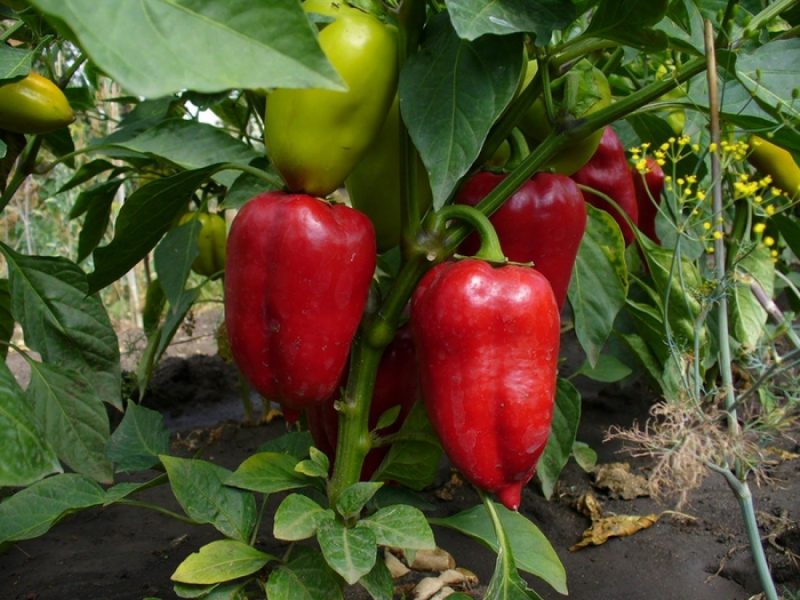
However, often when choosing varieties, farmers are based on dividing according to taste - into sweet and bitter.
Among sweet varieties, the most popular are:

Chord - an early ripe variety suitable for conservation with excellent taste. On bushes up to 1 m high, red cone-shaped fruits ripen, the mass of which varies from 160 to 190 g with a wall diameter of 6 mm. The variety is resistant to certain viral diseases.

Corvette - a mid-season, high-yielding variety whose semi-spreading bush reaches a height of 70 cm. The bright red cone-shaped fruits with a weight of up to 80 g are excellent both for fresh consumption and for preservation.
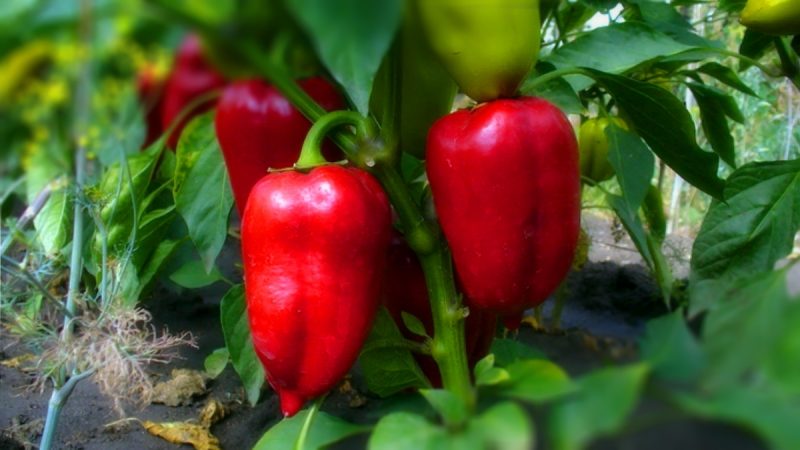
Eroshka - An early variety with compact bushes up to half a meter in height, a distinctive feature of which is a high load of fruits - up to 16 pieces per bush. Fruits of orange-red color have a cuboid shape and weigh about 140 g with a wall diameter of 5 mm. The variety is resistant to viral mosaic and apical rot.

Pound - an early ripe, medium-sized variety with large conical fruits of a red color, upon ripening of which the mass can reach 180 g with a wall thickness of 7 mm. The yield of the harvest is friendly when forming 18 fruits on two tiers of the bush.
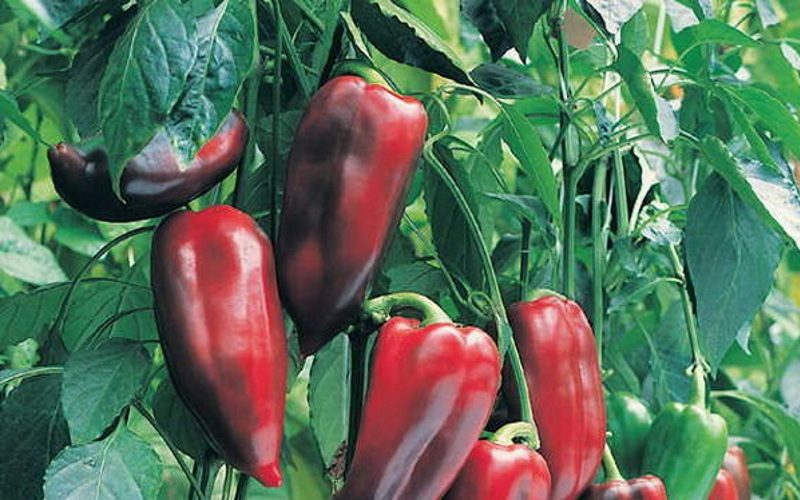
Pinocchio - a very early hybrid, the height of which does not exceed 70 cm, is characterized by oblong cone-shaped fruits of red color with a weight of up to 120 g. It is distinguished by stubbornness and is suitable for various harvestings for the winter.
When buying varieties of hot peppers, they often opt for the following:
The little Prince - mid-season variety with decorative properties. On bushes up to 120 cm tall, yellow or red rounded fruits with a strong aroma and pungent taste ripen. The weight of the fruit does not exceed 10 g.
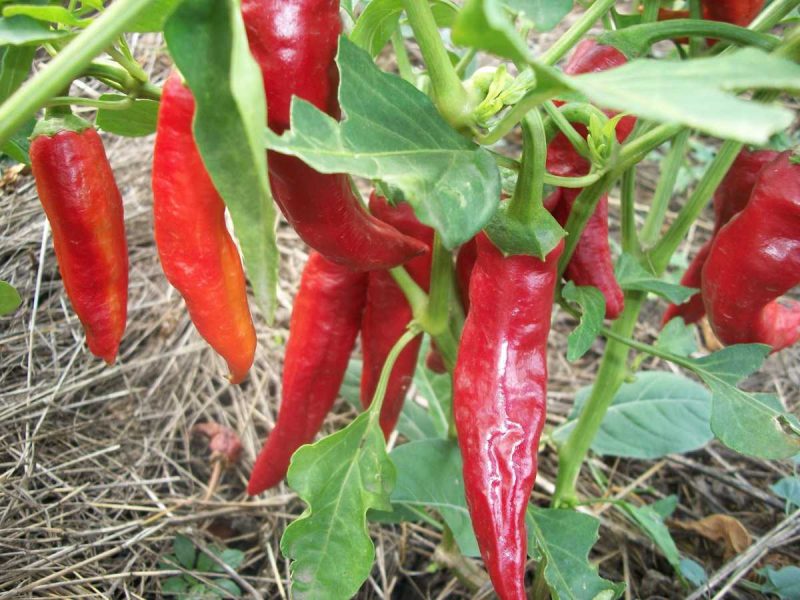
Ukrainian bitter - a mid-ripening variety with a semi-spreading bush up to 45 cm, on which a crop of red cone-shaped fruits weighing up to 20 g is formed. It is used both fresh and dried.
Fiery volcano - a high-yielding variety of early ripening. Narrow-triangular fruits with a pungent taste and pleasant aroma weigh on average about 20 g.
It is interesting:stuffed peppers in the oven - recipe
Basic requirements for growing
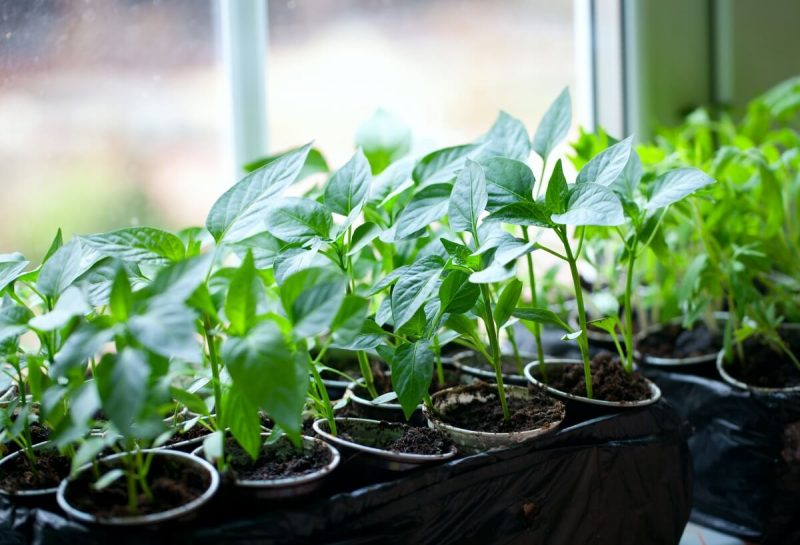
Pepper cultivation should be accompanied by a clear implementation of the basic requirements:
- preparation of high-quality planting material;
- proper site selection and soil preparation;
- compliance with the timing of planting seedlings in open ground;
- providing the necessary comprehensive care.
Growing seedlings at home
In order to get a rich harvest of pepper in the future, one should seriously approach the distillation of high-quality seedlings.
Work begins in late February and early March, depending on the length of the growing season of the selected variety, according to the following scheme:
- Capacity for seedlings is disinfected.
- 10 days before sowing from sheet soil, peat and sieved sand in a 2: 2: 1 ratio, the soil mixture is prepared for seedlings and calcined in an oven heated to 200 ° C for half an hour.
- Seeds are sorted, after which the selected seed is soaked in a pink solution of potassium permanganate for 20 minutes for disinfection.
- Prepared seeds are distributed on the surface of the substrate with a distance of 1.5-2 cm and sprinkled with a layer of earth of 1 cm.
- After seeding, the container is covered with a damp cloth and placed in a place with a temperature of 25 ° C.
- After the emergence of sprouts, the tank moves to a well-lit place, where the temperature regime is 15-17 ° C.
- The growth of seedlings is constantly monitored - moistening the soil, turning to the light.
- After the formation of one pair of real leaves, the seedlings dive into separate containers of 150 ml each, which are installed on the windowsill of the western or eastern window, located in a room with a temperature of at least 15 ° C.
Planting bell pepper in open ground
For the cultivation of sweet pepper, wind-protected areas with good lighting are selected. However, in addition to choosing a place before planting seedlings, you should prepare the soil on the site.
Soil requirements
The soil for the cultivation of the solanaceous representative should be light, loose and have a good fertile layer.
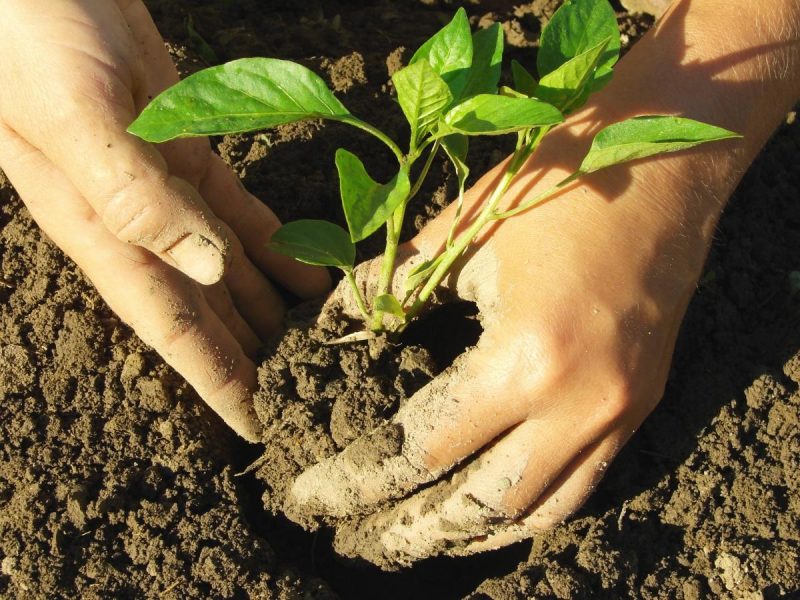
The soil preparation process is carried out as follows:
- In autumn, the site is freed from plant debris and dug up.
- When digging per 1 m2, 50 g of superphosphate, 80 g of wood ash, 10 kg of humus are introduced.
- With the advent of spring, the soil is loosened with the addition of 100 g of ammophos per 1 m2.
Then what can I plant?
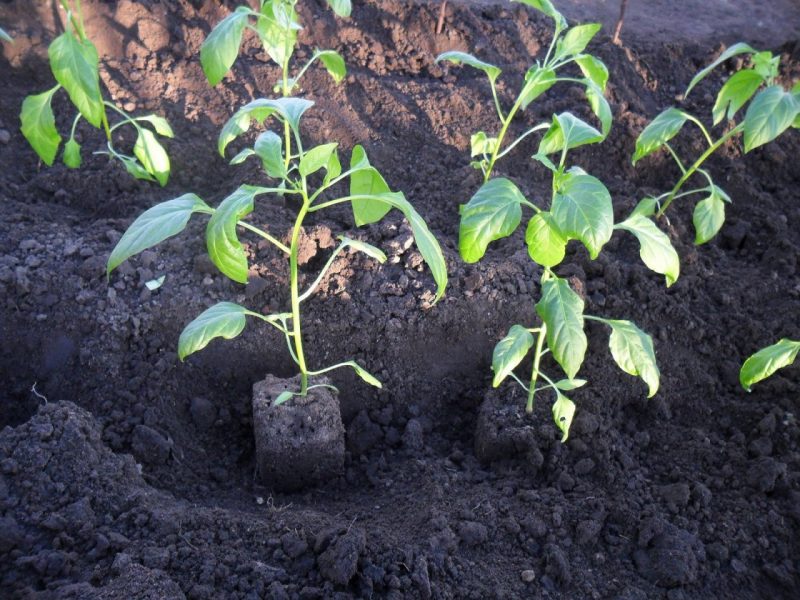
Good precursors for bell pepper are cruciferous (cabbage), pumpkin (cucumbers, zucchini), legumes (beans, soybeans) and small seeds (dill, carrots) crops. If last season the plot was occupied by tomatoes, peppers, eggplants or potatoes, then seedlings should not be planted there: being members of the same family, they remove similar nutrients from the soil and infect it with specialized harmful organisms that develop mainly on these crops.
How and when to plant?
In order to please yourself during the season with vitamin salads with the addition of pepper and even winter preparations, the gardener should adhere to certain rules:
- In late May, when the threat of night frost is over, seedlings are planted that have reached the age of 60-80 days.
- Wells are prepared according to a scheme of 70x30 cm.
- 1-2 liters of warm, settled water are poured into each depression.
- After absorbing water, a seedling with a moistened earth lump is placed in the planting pit and filled with soil.
- The earth in the near-stem circle is compacted.
Outdoor Care
In order for the selected variety to demonstrate the maximum possible result, it is necessary to carry out appropriate agricultural measures.
Frost protection
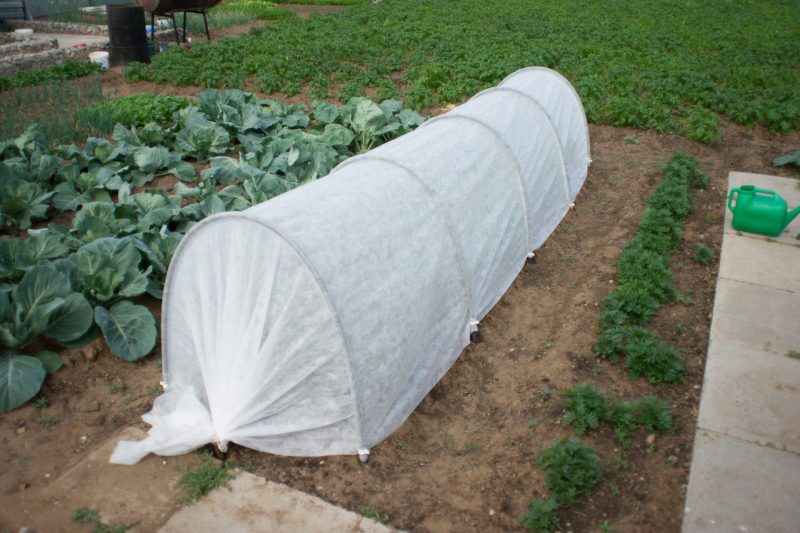
After planting pepper on the beds, the gardener needs to be prepared for night frosts and prepare portable film shelters, which will also be useful in case of prolonged cooling. You can take advantage of the event from well-known techniques - smoke. When choosing a material, preference should be given to objects that provide thick smoke.
Temperature mode
The optimum temperature at which pepper fully develops ranges from 20-25 ° C. If the temperature drops below 13 ° C, shelter should be arranged to avoid dropping buds or ovaries.
Watering pepper
For the representative of solanaceae, moistening with standing, warm water from 24 to 26 ° C is organized:
- Before the onset of the flowering phase, humidification is carried out once a week with a consumption rate of 12 liters per 1 m2, in the case of heat - twice a week.
- During flowering and fruiting, the frequency and volume of irrigation increase: three times a week, 14 liters per 1 m2.
Fertilizing and fertilizers
During the growing season, pepper is fed 3-4 times:
- At the first loosening, the first feeding with bird droppings and superphosphate is carried out when diluted with water in a proportion of 1:15.
- At the beginning of the formation of the ovary, pepper is fed a second time with 20 g of ammonium nitrate, 60 g of superphosphate and 20 g of potassium chloride, diluted in 10 l of water.
- A solution of bird droppings is introduced into the fruiting phase.
- When the fruits are ground, the fourth top dressing with wood ash is organized.
Soil loosening
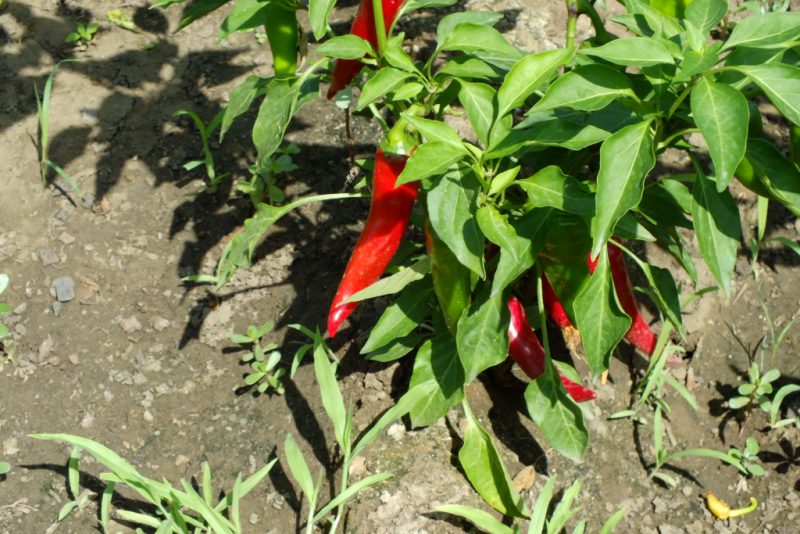
Pepper, possessing a gentle root system, needs a systematic loosening, which provides free access of air to the roots:
- The first time the procedure is carried out to a depth of 10 cm no earlier than 15 days after transplanting, so as not to injure the superficial root system of pepper.
- Subsequent loosening is carried out after each rain and soil moisture until a hard crust forms.
- In the flowering phase, the soil in the near-stem circle after the next loosening is swollen.
Pest and Disease Control
Pepper, along with other nightshade crops, is affected by fungal, viral and bacterial diseases. Among the most common are the black leg, which manifests itself at the seedling stage due to non-compliance with the temperature regime, humidity level and soil contamination, as well as wilting, as the plant develops, it dies. The use of high-quality seed, compliance with crop rotation and maintenance measures will help to protect plantings.Also an effective method of control, if infection has already occurred, is the treatment of plantings with a fungicide. Of the pests on the pepper, aphids, spider mites, and slugs are often observed, for which insecticides and a mechanical method of protection are used in the case of gastropod pests.
How to save bell pepper seeds for planting?
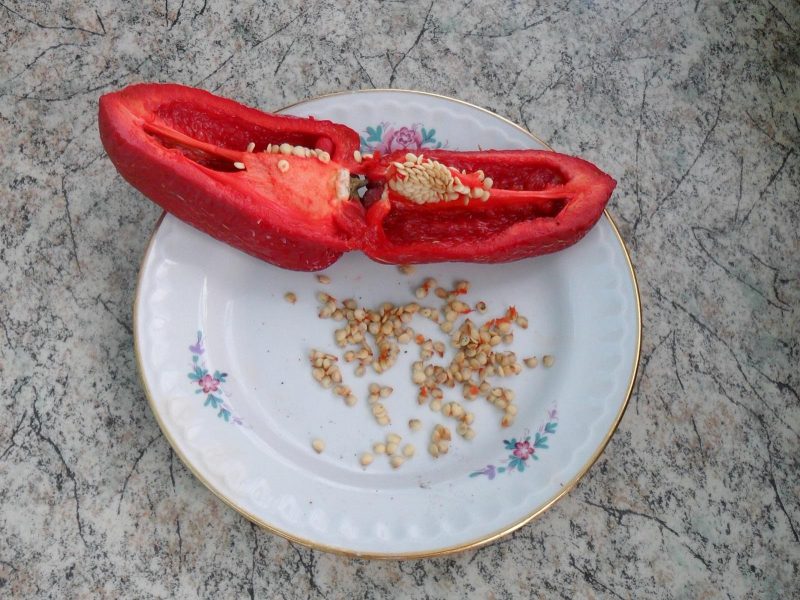
In order to receive seedlings of their own production in the next season, the gardener can prepare the seed independently on the following basis:
- After ripening, large fruits are picked from first-order shoots and placed in a place that is inaccessible for direct rays to ripen.
- After a week, the seeds are manually removed from the fruit and dried.
- The finished seed is placed in paper bags or glass containers and sent for storage in a dry place with a constant temperature.
Harvesting and storage
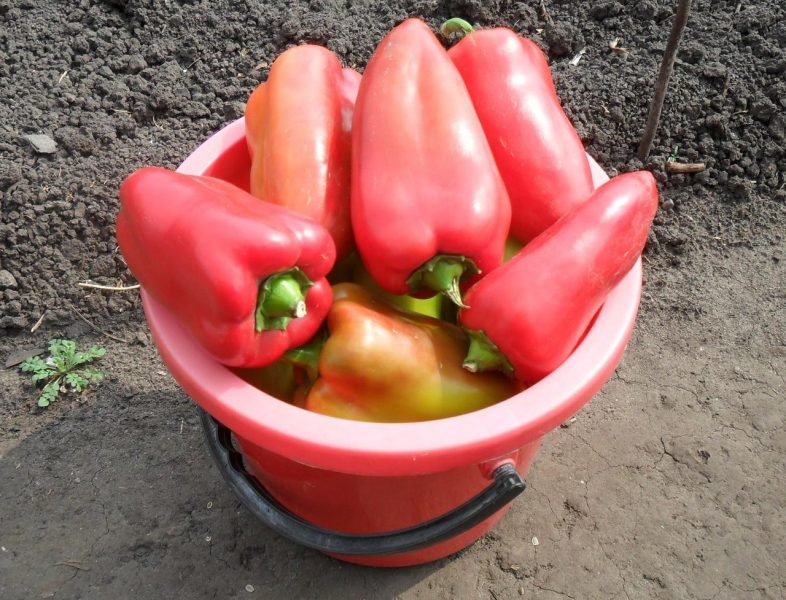
When harvesting pepper, it is necessary to distinguish between types of ripeness - technical and biological. If a vegetable of sweet varieties is supposed to be used immediately, then the collection is carried out after the onset of biological ripeness - the acquisition of pepper with a saturated color. If the goal is storage or transportation, then the fruits break down into the phase of technical ripeness, when they are still green. In the case of harvesting hot pepper varieties, the rule applies: "the redder, the hotter." Lovers of spicy harvest after full maturation, and for those who love such varieties for aroma, and not bitterness, the option of technical ripeness is suitable. So, getting a good harvest is quite simple if you organize the right and comprehensive care.












